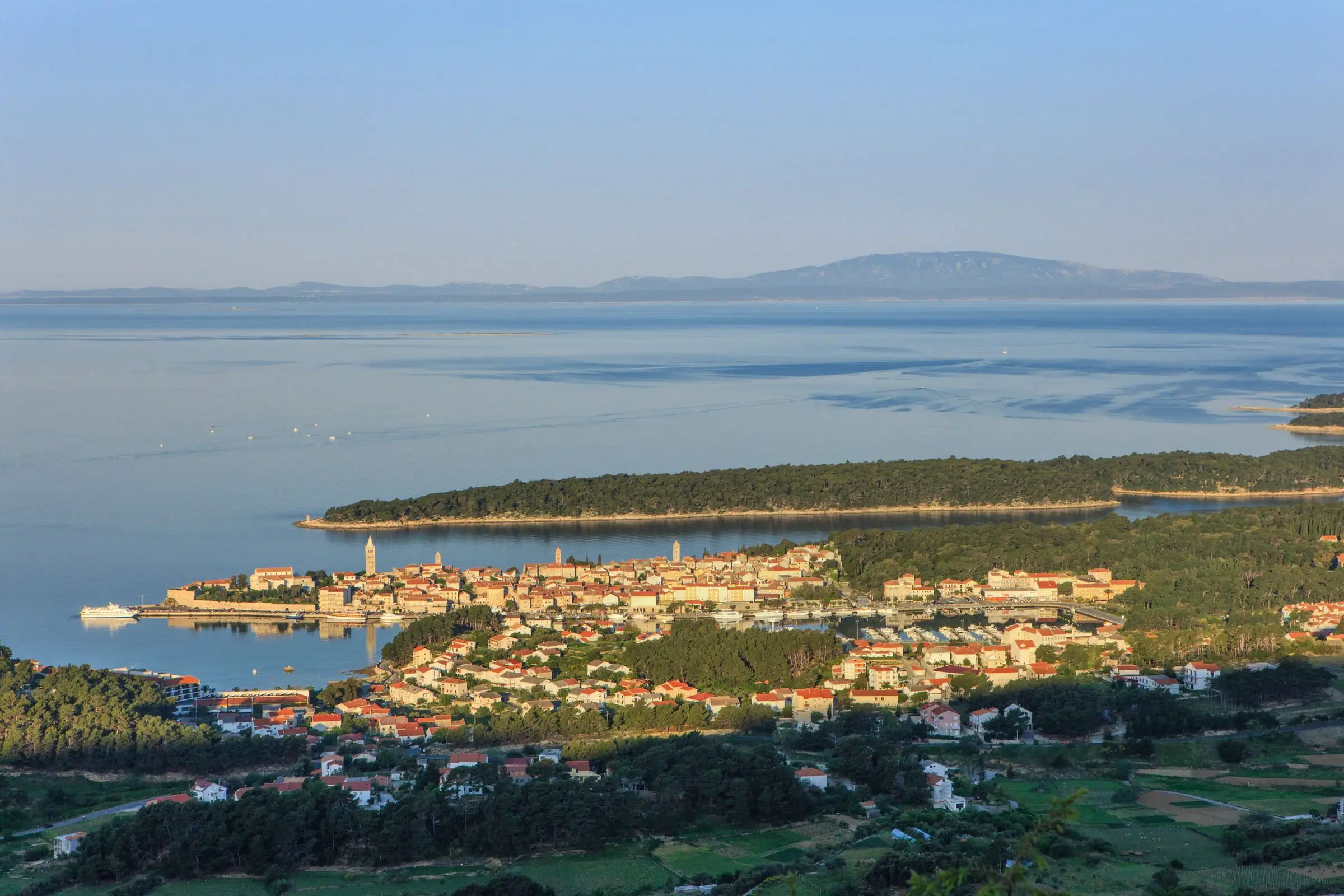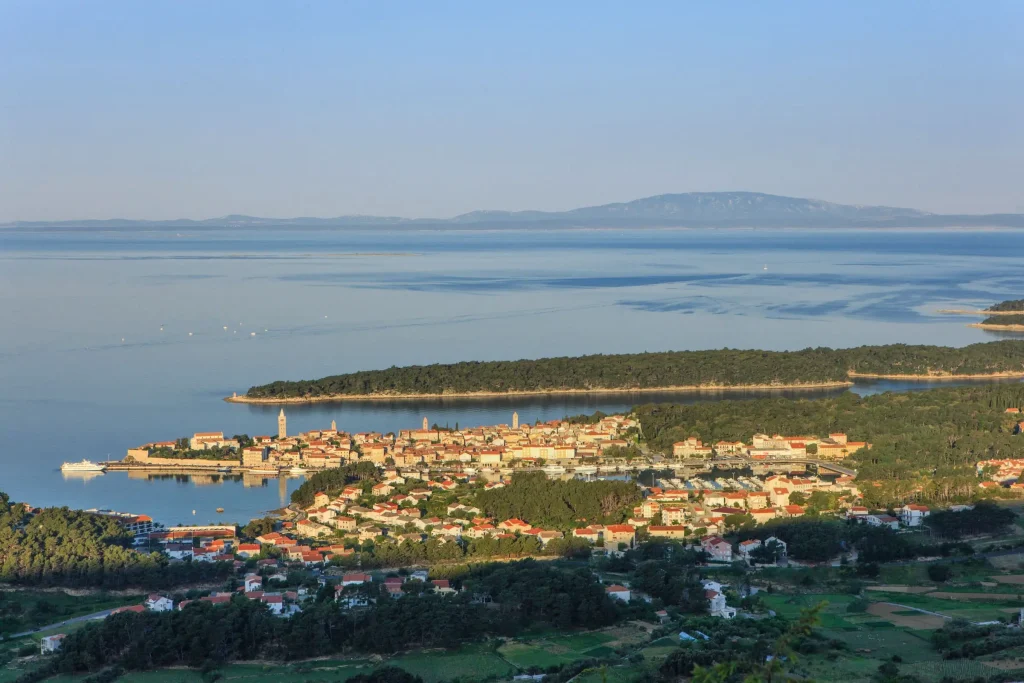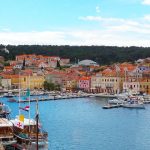
August 25, 2020 – While many tourists rushed home last weekend to beat new rules announced by their countries, the season is still in full swing on the Kvarner islands.
Croatia was a dream this summer with no overbookings and undercrowded tourist destinations. However, an increase in the number of coronavirus cases earned the country a spot on the red list of the Netherlands, the UK, Slovenia, Austria, and regionally, the most loyal Germany.
The coronavirus pandemic reduced air travel, which always benefited the most visited Istria and Kvarner, but Dubrovnik, predominantly an air destination, ended at the back of Croatian tourist regions in August, somewhere alongside Lika-Senj County. The Kvarner islands, however, achieved results above their expectations, and the island of Rab is a corona-free zone, reports Glas Istre.
“We have more tourists, and it feels like the tourist season is still going. There are mostly Germans, but there are also Slovenes and Italians. The novelty this year is that Czechs and Hungarians are increasingly coming to us and booking the post-season period,” says the director of the Rab Tourist Board Ivana Matusan. However, the City of Rab, for example, had 11,800 tourists on Thursday, 10,900 on Friday and 8.5 thousand on Sunday, which is 55 percent of overnight stays compared to the same day last year. Looking at August, the City of Rab is at 75 percent of last year’s results.
There are currently 4,470 tourists in the Municipality of Lopar, which is 56 percent compared to last year, and a thousand fewer guests than on Thursday last week. Most of them were Austrians and Slovenes. In the previous part of August, Lopar achieved almost 73 percent of last year’s results.
“We can be satisfied with the results of the tourist traffic, considering the pessimistic announcements at the very beginning of the tourist season, when we planned traffic at the level of 35 percent compared to last year.
Traditionally, Germans made up the biggest number of tourists here, and it is interesting that after the Germans, most are Czechs, about 10 percent, and Croats, also 10 percent. Austrians and Slovenes, who usually participate in tourist traffic with about 10 percent, currently make up 2 percent each. Announcements for September are good, although the San Marino resort is likely to close earlier than planned. There are a lot of cancellations of reservations and the uncertainty is great, because the situation is changing from day to day,” the director of the Lopar Tourist Board Marin Musco said.
There are currently 11,000 guests in the town of Mali Losinj, which is 47 percent compared to last year.
We can see a drop in guests since the introduction of special measures of entry into Italy, Austria, and now Slovenia; every day, we have a thousand fewer guests. For example, on August 14, we had 19,631 registered guests. Currently, the island of Losinj has the largest number of German guests, 3,415, followed by guests from Croatia (2,342), 1,616 Slovenes, 1,042 Italians, 510 Czechs, Poles… and now there are 1,600 of them with a tendency of further decline, considering the departures on Monday before the mandatory 14-day quarantine measures,” says the director of the Mali Losinj Tourist Board, Dalibor Cvitkovic. He also points out that during August, they realized 413,612 overnight stays, which is 68 percent of last year’s result, with the index being 74 in the first 15 days of August.
And the ‘golden island’ Krk is nearing the end of the season…
“Following the new situations from last week with the introduction of new measures of individual countries, a number of cancellations have started, which will certainly affect the post-season, as well as the further course of the season. Booking has almost stopped, but tourist traffic is still moderately intense, although the decline in traffic is very noticeable. For example, on August 23, 25,410 overnight stays were registered on the island of Krk, which is 49 percent compared to 2019.
In total, there were slightly less than 4,000 arrivals on Krk on Sunday, August 23, which is half of last year’s result,” says the director of the Krk Island Tourist Board Majda Sale and estimates that the post-season will depend primarily on the epidemiological situation, but also on the weather.
“Domestic guests increased in statistics, in July in arrivals by 20 percent, and in overnight stays by 3.8 percent, while in August they broke into third place with a share of 12 percent. In the first half of August, Slovenes came in second place, and in August, it was customary for the Italians to be in the first place. The Germans, who are also the most represented in terms of the number of arrivals and overnight stays, kept the share of 35 percent, for example, in July, guests from Germany had only 2.6 percent fewer arrivals than last year and 8 percent fewer overnight stays than last year. It is also noticeable that the guests stayed longer on the island of Krk, compared to last year, 6 days on average, and for the most part, they came individually, as many as 83 percent of them.
By the way, about 2.3 million arrivals and 17.6 million overnight stays have been made in Croatia so far in August, which is 67 percent of last year’s result achieved in the same period in terms of tourist overnight stays. The highest number of overnight stays in the same period was realized in Istria, which recorded 4.3 million overnight stays, in Kvarner 3.5 million overnight stays, in Split-Dalmatia County 3.4 million overnight stays, Zadar 3.2, Sibenik-Knin 1.4 million overnight stays, Dubrovnik-Neretva 999 thousand and Lika-Senj County 636 thousand overnight stays.
In the current part of August, most tourist overnight stays were realized from the German market, about 4.3 million, which is 90 percent of last year’s result. The domestic market follows with 3.3 million overnight stays, which is the result of last year’s level in the same period, the Slovenian market with 2.6 million overnight stays, which is 94 percent of last year’s result, and the Polish market with 1.8 million overnight stays, an increase of 5 percent over the same period last year. From January 1 to August 22, a total of 8,855,337 overnight stays were realized in Kvarner, which is 61 percent compared to the same period last year.
For the latest travel info, bookmark our main travel info article, which is updated daily.
Read the Croatian Travel Update in your language – now available in 24 languages
Join the Total Croatia Travel INFO Viber community.









